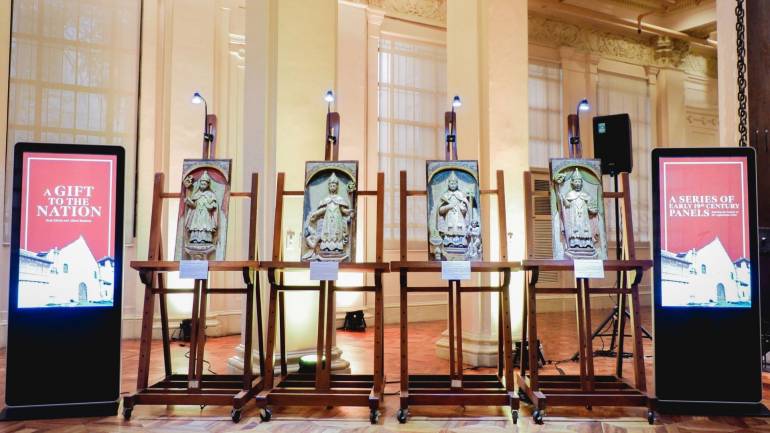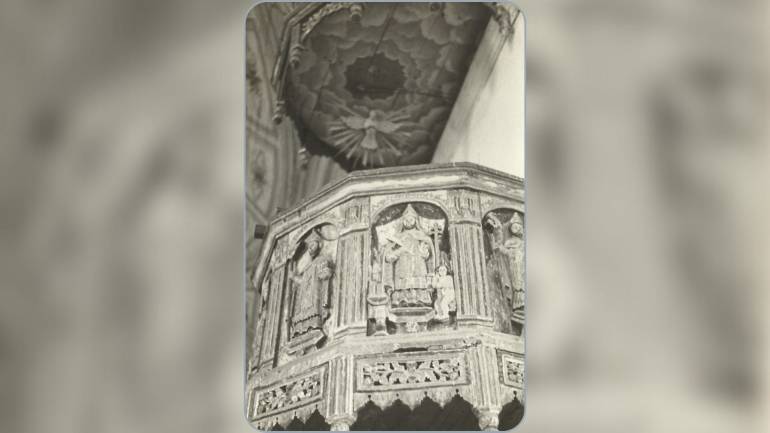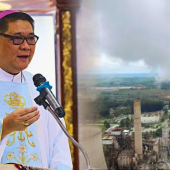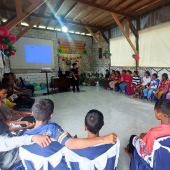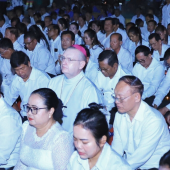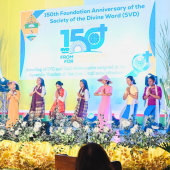Philippines: A Whodunit Surrounding Four Wooden Panels Stolen from the Archdiocesan Shrine of the Virgin Mary
The Archdiocese of Cebu in the Philippines hosts several national shrines and religious historical landmarks, but for the past few days, an archdiocesan shrine in the southern part of the province has dominated the headlines and intrigued netizens with a penchant for crime stories where the identity of the wrongdoer remains undisclosed.
However, for Archdiocesan and civil government officials, the whodunit may well lead to the recovery of four wooden relief panels stolen more than four decades ago from the Archdiocesan Shrine of Patrocinio de Maria Santisima in Boljoon town.
The wooden panels, which used to hang in the pulpit of the Boljoon church, depict an image of St. Augustine of Hippo.
Built in 1783 by Augustinian priest Fr. Ambrosio Otero, the Boljoon church is of baroque design. The National Commission of the Philippines declared it a National Historical Landmark in 1999. In 2001, the National Museum of the Philippines declared it a National Cultural Treasure.
Shock and Outrage in the Early Eighties
One day, in the early 1980s, the townspeople of Boljoon woke up shocked to learn of the disappearance of the four wooden panels.
Boljoon residents and active parishioners accused someone of stealing the panels. Even more shocking was the report that the then-parish priest was responsible for the panels' disappearance. People became disgusted and stopped attending mass in their parish church, instead going to a church in a nearby town to fulfill their religious obligations.
Fast forward to 2024
On Valentine's Day, Cebuanos, especially the people of Boljoon, were surprised by a social media report that the stolen panels found their way into the National Museum of the Philippines after they were turned over by private collectors, Mr. and Mrs. Edwin Bautista. The formal ceremony billed “A Gift to the Nation” was amply covered by a pictorial with the donors, NMP officials, and guests.
The report on the Facebook page of the National Museum of the Philippines immediately triggered a flurry of reactions. Many were shocked, and some were angry that the long-lost panels believed to have been stolen resurfaced in a public ceremony. Concerned Cebuanos called for the panels to be returned.
Amid the stir of reactions, Cebu Archbishop Jose S. Palma wrote NMP Director General Jeremy Barns to assert the Cebu Archdiocese’s ownership of the panels and request their immediate return to Boljoon “at the pulpit where they were surreptitiously removed.”
In his letter dated February 20, 2024, Palma stated that the panels were removed without permission from the church during the time of his predecessor, Ricardo Cardinal Vidal.
Palma added that there is no official record in the Archdiocesan Archives nor the Chancery Office “of any request from the parish priest at the time, Fr. Faustino Cortes, requesting to deconsecrate them for removal, much less conveyance to third parties in exchange for monetary purposes for the parish.”
“Neither this would have been approved, knowing that these panels are sacred objects of the Church, where for centuries, Augustinian friars delivered sermons to the faithful,” Palma stressed in his letter.
Even as he acknowledged the NMP’s desire to exhibit the panels to the general public, Palma said the illegal removal of the panels “constitutes a sacrilege.”
“They should never have been treated, then or now, as mere artworks for exhibition, much less for private appreciation by the collectors who purchased them, for these panels are considered in the ecclesial rite as tools of evangelization.”
For her part, Cebu Governor Gwendolyn Garcia urged the NMP to return the panels to the archdiocesan shrine in Boljoon. The 17-man legislative body unanimously passed a provincial board resolution backing her statement.
Both Archbishop Palma and Governor Garcia called for a constructive dialogue with NMP officials as a way out of the standoff.
Meanwhile, the National Museum of the Philippines released a statement saying that it obtained the four panels legitimately from their spouses, Edwin and Aileen Bautista. While acknowledging “the historical vulnerability of church artifacts to looting and improper disposal in the past,” the NMP cited “dynamic ownership” in keeping the four panels.
The statement also indicated that the NMP is open to a dialogue with church and civil government officials to resolve the controversy.- Malou Guanzon-Apalisok
Radio Veritas Asia (RVA), a media platform of the Catholic Church, aims to share Christ. RVA started in 1969 as a continental Catholic radio station to serve Asian countries in their respective local language, thus earning the tag “the Voice of Asian Christianity.” Responding to the emerging context, RVA embraced media platforms to connect with the global Asian audience via its 21 language websites and various social media platforms.





